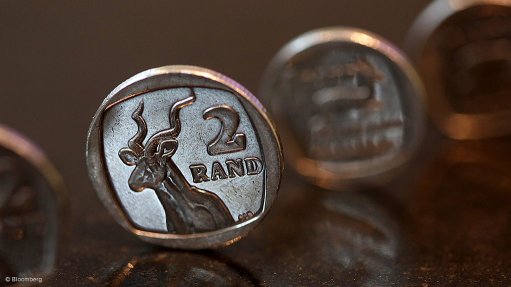Adventures on the Eskom system – Part 4
In my last column on the Eskom integrated power system, I explained that I worked for Eskom as the senior engineer for operations in the Eastern Cape for nearly two years. My region, the Eastern Cape region, included Port Elizabeth. Eastern Cape Control reported to me and all I had to do was to make decisions on how to operate the Eskom Eastern Cape region system so as to keep outages to a minimum. Here is another adventure:
I reported to the Eastern Cape chief engineer, but I had a reporting function to National Control, which controlled the 400 kV and 220 kV systems, as well as some 132 kV systems.
Port Elizabeth had a coal-fired power station, Swartkops. The Port Elizabeth municipality operated Swartkops such that they reduced the maximum demand from Eskom to 200 MW during the day and reduced the Swartkops output at night to save coal. All went along in happy fashion until the Eskom marketing department appeared. They cut a deal with the Port Elizabeth municipality where, as part of their drive to persuade organisations to use more electricity, the municipality would switch Swartkops off. As an incentive, Eskom would offer the electricity at a low rate. They did not tell the operations department.
Two power lines, Poseidon/Grassridge 1 and 2, supplied Port Elizabeth. Their capacity was 2 × 200 MW, giving a total of 400 MW. If one of the lines tripped, the other line could carry the total 200 MW load without tripping. After a time, I noticed that the total load was increasing, sometimes up to beyond 220 MW. I thought the guys at the Port Elizabeth municipality probably knew what they were doing but this was taking the system to a point where, if one line tripped, the other would have to carry a 10% overload. I called Aiden, the Port Elizabeth operations electrical engineer, and told him about this. He said he would look into it. A few weeks later, my phone rang and the gravel deep voice of Jan Esterhuizen of National Control spoke: “Terry,” he said, “look at your screens. Now. Your line to Port Elizabeth is cooking. It’s going to melt.” A cold fear clutched my heart. I raced to Pembroke Control. In the control room, the telemetry screens showed that Poseidon/Grassridge 1 had tripped and that Poseidon/Grassridge 2 was overloaded by 20%. Fast action was needed. I phoned Aiden. I told him he would have to shed load if we were to keep supplying Port Elizabeth. I told him to shed 50 MW. There was a silence.
Back at the screens, we noticed that the busbar voltage at Grassridge (which had been 220 kV) was 212 kV and falling at a rate of about 1 kV a minute. Nobody had ever seen a phenomena like this. I told the senior controller that, if the voltage got to 205 kV, he should disconnect Port Elizabeth by opening the Grassridge circuit breakers through the telemetry system. He asked me to repeat the instruction on ‘the loop’, the system which recorded all operator instructions.
And so Port Elizabeth was disconnected. The carrier phone from Port Elizabeth Operations rang and Aiden asked me what happened. I then found out that Swartkops had been switched off. Aiden asked me to reconnect Poseidon/Grassridge 2. I thought carefully: one line had tripped for reasons unknown. The other had been overloaded and could be in a damaged condition. If we closed Poseidon/Grassridge 2 and it failed . . . the headlines would read ‘Major South African City Without Power for Days’. So I told him, sorry. Naturally, today, this would be no news at all. I asked our Port Elizabeth district to do line patrols. Near Poseidon, the patrol found the Poseidon/Grassridge 1 insulators on a strain tower had been shattered. Empty shotgun cartridges showed that somebody had shot the insulators out. It took 24 hours to restore power to Port Elizabeth.
Article Enquiry
Email Article
Save Article
Feedback
To advertise email advertising@creamermedia.co.za or click here
Comments
Press Office
Announcements
What's On
Subscribe to improve your user experience...
Option 1 (equivalent of R125 a month):
Receive a weekly copy of Creamer Media's Engineering News & Mining Weekly magazine
(print copy for those in South Africa and e-magazine for those outside of South Africa)
Receive daily email newsletters
Access to full search results
Access archive of magazine back copies
Access to Projects in Progress
Access to ONE Research Report of your choice in PDF format
Option 2 (equivalent of R375 a month):
All benefits from Option 1
PLUS
Access to Creamer Media's Research Channel Africa for ALL Research Reports, in PDF format, on various industrial and mining sectors
including Electricity; Water; Energy Transition; Hydrogen; Roads, Rail and Ports; Coal; Gold; Platinum; Battery Metals; etc.
Already a subscriber?
Forgotten your password?
Receive weekly copy of Creamer Media's Engineering News & Mining Weekly magazine (print copy for those in South Africa and e-magazine for those outside of South Africa)
➕
Recieve daily email newsletters
➕
Access to full search results
➕
Access archive of magazine back copies
➕
Access to Projects in Progress
➕
Access to ONE Research Report of your choice in PDF format
RESEARCH CHANNEL AFRICA
R4500 (equivalent of R375 a month)
SUBSCRIBEAll benefits from Option 1
➕
Access to Creamer Media's Research Channel Africa for ALL Research Reports on various industrial and mining sectors, in PDF format, including on:
Electricity
➕
Water
➕
Energy Transition
➕
Hydrogen
➕
Roads, Rail and Ports
➕
Coal
➕
Gold
➕
Platinum
➕
Battery Metals
➕
etc.
Receive all benefits from Option 1 or Option 2 delivered to numerous people at your company
➕
Multiple User names and Passwords for simultaneous log-ins
➕
Intranet integration access to all in your organisation


















